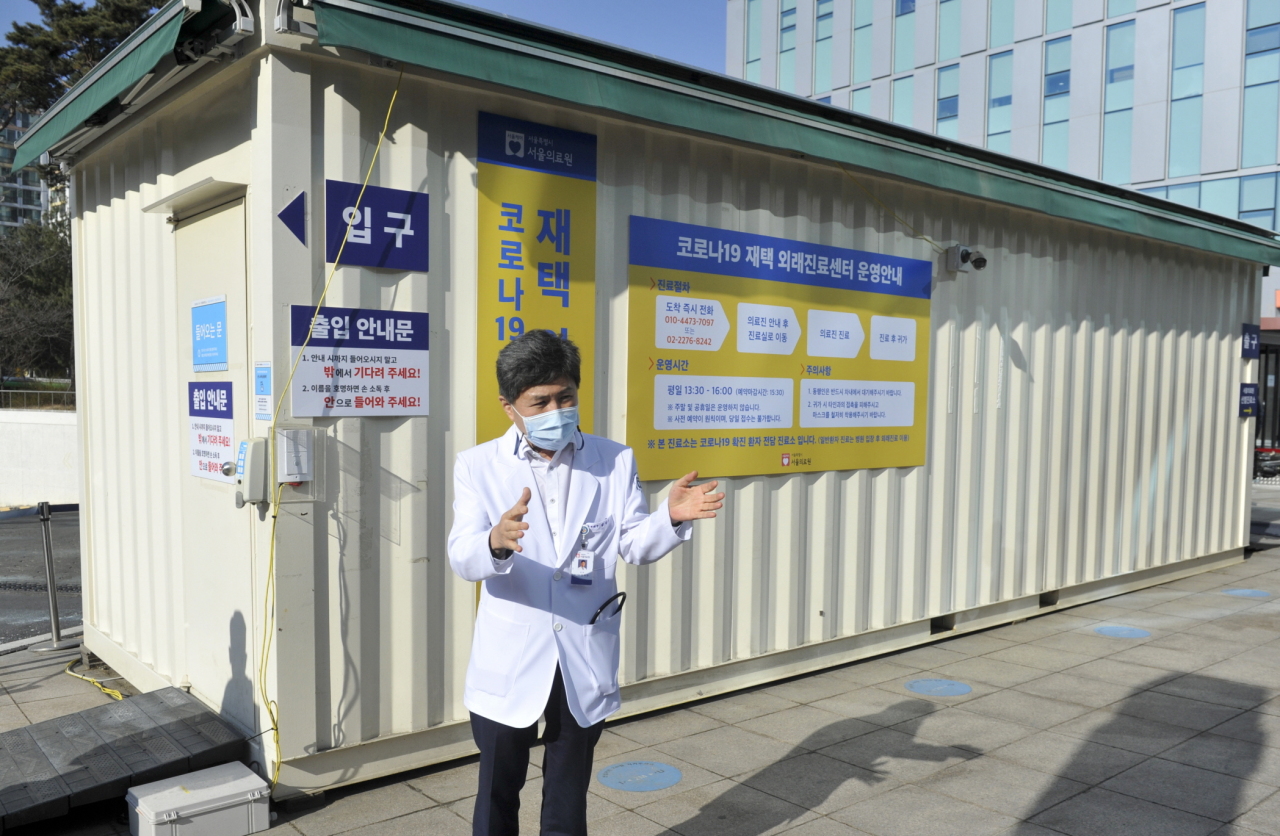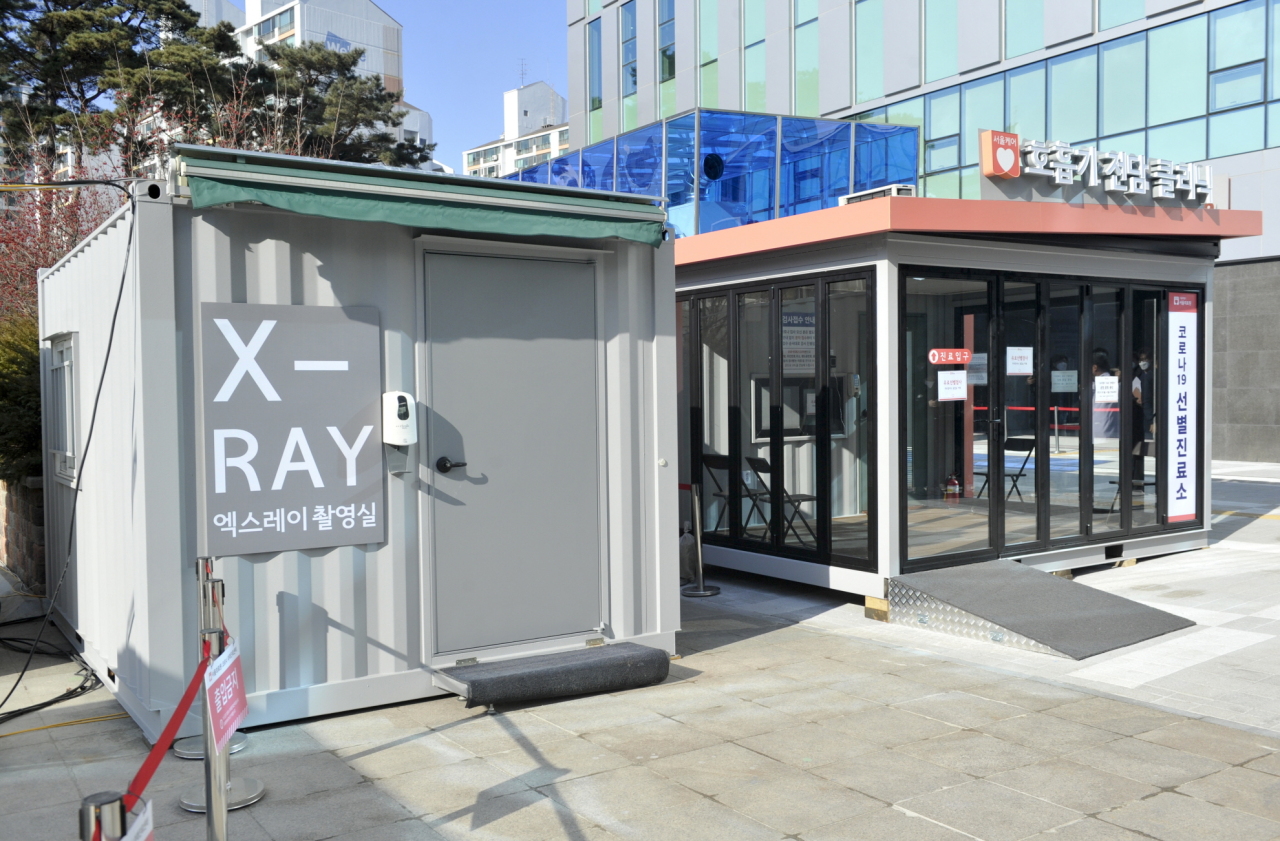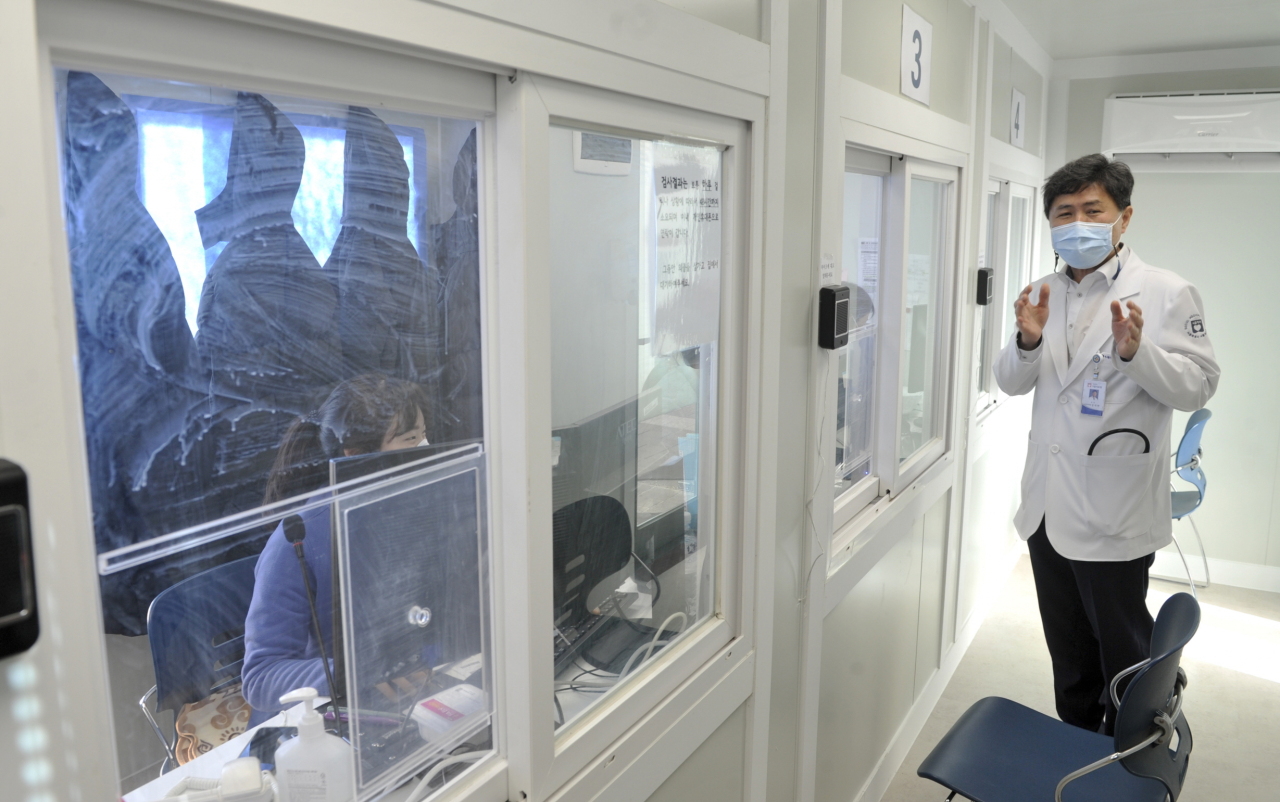[From the scene] Solution to bed crisis? Korea sets up clinics for self-isolating patients
Patients recovering at home can break isolation to see doctor
By Kim ArinPublished : Jan. 13, 2022 - 18:26

Since fall last year, the majority of COVID-19 patients in South Korea have been recovering at home. While patients are homebound as a rule, they can now break isolation on one occasion -- to see a doctor.
The revised guidelines follows the December hospital bed crisis, which spawned a dramatic rise in patients dying at home. To prevent patient oversight while reserving hospital spots for more urgent cases only, the country is letting self-isolating patients seek in-person care at clinics.
These clinics are for patients who are not sick enough to be in a hospital, but still unwell. All appointments must be pre-arranged with the district public health center, which then sends a special cab to fetch patients. If patients are in a fit condition to drive, they can do so.
Seoul Medical Center in Jungnang-gu, a northern district in the city, is one of the first in the country to run a clinic for home recovering patients. The container clinic for COVID-19 patients is set up outside the hospital so that they won’t cross paths with other patients or staff.
“Hospitals all over the country were struggling during the latest surge when more than 7,000 patients were being diagnosed per day. That may be repeated once omicron becomes dominant,” said Dr. Kim Seok-yeon, the hospital’s medical affairs vice president.
“My understanding is that the government is expanding the at-home recovery program to brace for that possibility.”
While he had anticipated higher demand for the outpatient clinic -- one of only six in all of Seoul -- only about 30 people had come in over the last two weeks. Now it was mostly younger patients who are staying home as opposed to back in December, when there were more older patients, he said.
Pfizer oral antivirals, the Paxlovid, were soon to be prescribed to older, more vulnerable patients at home. Due to limited availability the pill’s use is currently limited to patients at least 65 and older who are immunocompromised.
“There are a lot of medications that cannot be taken together with the Pfizer treatment, so it must be carefully prescribed,” he said.
On the other hand, the hospital’s infectious disease department has decided against administering Celltrion’s antibody treatment, Regkirona, over its questionable effectiveness against delta and omicron variants, he added.


Kang Soon-won, a head nurse overseeing the hospital’s remote monitoring program, said that at-home patients who develop worrying signs like persistent fevers or low blood oxygen levels can be brought in for an outpatient appointment.
Last month, each nurse was having to check in on 100 or more patients. “That means one nurse was making 300 phone calls a day. Now we are seeing a third of that,” she said. “It looks like the busiest days are behind us.”
Seoul plans on having more of these clinics around the city.
On the question of possible transmission risks of patients leaving isolation, a senior Seoul official said, “patients are asked to wear face masks at all times as they travel to and from the clinic. Plus there is a smartphone app for making sure they are not taking any detours.”
About two weeks ago the hospital also opened up an emergency room dedicated to handling emergent care needs of at-home patients -- in what is the first and the only COVID-19 patient-only ER in Korea. Days after its opening, a patient who gave birth in an ambulance underwent a procedure here, said Dr. Hahm Eun-mi, an ER doctor.
“Patients usually come here for breathing difficulties and chest pains. Most of them would already have pneumonia, in which case are transferred to a COVID-19 ward,” she said.
The Seoul hospital has treated the highest number of COVID-19 patients in the country. Including patients currently hospitalized, more than 21,400 have undergone care at the hands of the hospital.
Aside from the main hospital in Jungnang-gu, which is soon to add some 80 more beds to have 355 beds in total, its branch in Gangnam-gu has set up modular wards that together provide around 40 beds.
“It’s been two long years, and the hardest part is not knowing what awaits us. As a public hospital, I believe it is our duty to serve the community until the end,” said hospital president Dr. Song Kwan-young.
By Kim Arin (arin@heraldcorp.com)

















![[KH Explains] Hyundai's full hybrid edge to pay off amid slow transition to pure EVs](http://res.heraldm.com/phpwas/restmb_idxmake.php?idx=652&simg=/content/image/2024/04/18/20240418050645_0.jpg&u=20240418181020)

![[Today’s K-pop] Zico drops snippet of collaboration with Jennie](http://res.heraldm.com/phpwas/restmb_idxmake.php?idx=642&simg=/content/image/2024/04/18/20240418050702_0.jpg&u=)